The concept under examination involves constructing an enclosure for canines using materials and labor supplied directly by the owner or caretaker, rather than purchasing a pre-manufactured product. This approach allows for customized dimensions and features tailored to the specific animal and environment it will occupy. Considerations often include the dog’s size, breed, temperament, and the available space within the home or yard.
Such a construction method can offer multiple advantages. It often results in cost savings compared to retail options, especially for larger breeds requiring oversized cages. Furthermore, it provides the opportunity to incorporate unique design elements, matching existing dcor or addressing specific behavioral needs of the housed animal. Historically, crafting functional items for domestic animals has been a common practice driven by resourcefulness and a desire to provide individualized care.
The subsequent discussion will delve into practical aspects of this form of pet care, covering material selection, construction techniques, safety considerations, and design options relevant to building a secure and comfortable canine enclosure.
Construction Considerations for Custom Canine Enclosures
Effective creation of a secure and functional canine enclosure requires careful planning and execution. The following tips provide guidance on key aspects of the building process.
Tip 1: Material Selection: Choose durable and non-toxic materials suitable for containing the specific dog breed. Untreated wood requires sealing to prevent absorption of fluids, while metal components should be rust-resistant or powder-coated.
Tip 2: Size and Dimensions: Accurately measure the dog’s height and length when standing and lying down. The enclosure should allow the dog to stand, turn around, and lie comfortably. Excessive space can lead to anxiety for some animals.
Tip 3: Secure Fasteners: Utilize heavy-duty hinges and latches to prevent escape. Ensure that all fasteners are properly installed and regularly inspected for wear or damage. Reinforce weak points as needed.
Tip 4: Proper Ventilation: Incorporate sufficient ventilation to prevent the buildup of odors and moisture. Mesh sides or strategically placed openings are crucial, but consider the dog’s potential for escape when designing ventilation.
Tip 5: Smooth Surfaces: Eliminate sharp edges, splinters, or protruding hardware that could injure the dog. Sand rough surfaces and cover exposed screws or nails.
Tip 6: Floor Design: A solid floor provides stability and containment. Consider drainage if the enclosure is intended for outdoor use. Removable flooring facilitates cleaning.
Tip 7: Entry and Exit: Design a secure and easily accessible entry point. A door with a double-locking mechanism provides added security. The door should swing smoothly and be wide enough for comfortable entry and exit.
Adhering to these guidelines enhances the safety, comfort, and longevity of the resulting canine enclosure. Prioritizing these details ensures a functional and secure environment for the animal.
The subsequent sections will address advanced design concepts and customization options for creating uniquely tailored canine enclosures.
1. Dimensions
The dimensions of a dog enclosure constructed via do-it-yourself methods are paramount to the animal’s welfare and the functionality of the structure. Inadequate space can lead to physical discomfort, behavioral issues, and an overall reduction in the quality of life for the housed animal. Conversely, excessive space might promote unsanitary habits or heightened anxiety in certain breeds. Therefore, precise calculations and careful consideration of the dog’s size, breed-specific behaviors, and intended use of the enclosure are necessary.
Consider a large breed, such as a Great Dane. An enclosure designed with dimensions suitable for a smaller breed, such as a Beagle, would clearly be inadequate. The Great Dane would be unable to stand, turn around, or lie down comfortably. This restricted movement could lead to joint problems or psychological stress. In contrast, a small breed might feel insecure and develop destructive behaviors in an oversized enclosure. A practical example of appropriate dimensional planning involves measuring the dog’s height when standing and length when lying down, adding several inches to each dimension to allow for comfortable movement and stretching. The height measurement should also consider the dog’s head height when sitting.
Ultimately, the proper dimensioning of the homemade canine enclosure is an exercise in responsible pet ownership. Neglecting this crucial aspect can have detrimental effects on the animal’s health and well-being. Addressing dimensional requirements comprehensively represents a challenge in DIY construction, requiring meticulous planning and a thorough understanding of the animal’s needs. Proper consideration of dimensions is essential to a safe and practical structure.
2. Materials
The selection of materials for a self-constructed canine enclosure significantly impacts its structural integrity, the housed animal’s safety, and the longevity of the finished product. Material choices dictate resistance to environmental factors, potential for injury to the dog, and the overall aesthetic appeal of the cage. For instance, using untreated wood can lead to splintering, bacterial growth from absorbed fluids, and structural degradation from moisture exposure. Conversely, metal components, while durable, may present sharp edges or points of injury if not properly finished and secured. The correct selection of materials directly influences the success and practicality of the enclosure.
Practical applications of appropriate material selection are evident in various construction approaches. Utilizing sealed and treated lumber for the frame provides resistance to weathering and prevents absorption of waste, thereby extending the lifespan of the enclosure. Employing heavy-gauge wire mesh with small openings prevents escape and minimizes the risk of paw entrapment. Selecting non-toxic paints or coatings ensures the safety of the animal should it chew or lick the surfaces. Real-world examples demonstrate the consequences of poor material selection: an enclosure built with flimsy materials may collapse under the weight of a large dog, or one constructed with toxic materials could lead to health complications.
In conclusion, the relationship between material choice and the final performance of a self-assembled dog cage is critical. Prioritizing durable, safe, and non-toxic materials mitigates potential risks and extends the useful life of the enclosure. While cost considerations may influence material choices, compromising on quality can ultimately lead to higher expenses in the long run due to repairs or replacements. Therefore, a thorough understanding of material properties and their suitability for the intended application is essential for successful project completion.
3. Safety
Safety is a paramount concern in the construction of a canine enclosure. The structural integrity, material selection, and design features directly impact the animal’s well-being and the prevention of potential hazards.
- Material Toxicity
The materials employed in construction must be non-toxic to prevent poisoning or allergic reactions. Treated lumber, paints, and coatings should be specifically formulated for animal use, avoiding substances containing lead, chromates, or volatile organic compounds. Ingestion of these substances can result in serious health complications, requiring veterinary intervention.
- Structural Integrity and Stability
The framework of the enclosure must be robust enough to withstand the dog’s weight and movements. Weak points, such as improperly secured joints or insufficient bracing, can lead to collapse, potentially causing injury. The cage’s stability is equally important, preventing tipping or accidental displacement that could trap or frighten the animal.
- Entrapment Hazards
Design features, such as wire mesh spacing or gaps in the structure, must be carefully considered to prevent paw or head entrapment. Small openings can cause injury, particularly if the dog attempts to escape or chew on the cage. Protruding fasteners, sharp edges, or rough surfaces pose laceration and puncture risks and must be eliminated.
- Ventilation and Environmental Control
Adequate ventilation is crucial for preventing the build-up of harmful gases, moisture, and extreme temperatures. Insufficient airflow can lead to respiratory problems, heatstroke, or the proliferation of bacteria and fungi. The enclosure’s design should allow for proper air circulation while shielding the animal from direct drafts or extreme weather conditions.
The facets of safety discussed above highlight the critical role of informed decision-making in the construction of a canine enclosure. A focus on non-toxic materials, structural stability, entrapment prevention, and proper ventilation significantly reduces the risk of injury or illness. DIY projects must prioritize safety to ensure a secure and healthy environment for the housed animal.
4. Durability
The longevity of a canine enclosure constructed using do-it-yourself methods is directly correlated with the durability of both the selected materials and the quality of the craftsmanship. A structure intended to contain a dog must withstand daily wear and tear, potential exposure to the elements, and the animal’s inherent behaviors such as chewing, scratching, and attempts to escape. Inadequate durability results in premature degradation, increasing the risk of injury to the animal and necessitating frequent repairs or complete replacement. For example, an enclosure built with untreated softwood and flimsy fasteners is unlikely to withstand the persistent chewing of a determined dog, whereas a similar structure built with pressure-treated lumber and robust hardware exhibits significantly greater resistance to damage.
Durability considerations extend beyond material selection. Proper construction techniques, such as reinforced joints and adequate bracing, are crucial for maintaining structural integrity over time. Regular maintenance, including inspections for wear and tear, replacement of damaged components, and reapplication of protective coatings, contributes significantly to extending the lifespan of the enclosure. An enclosure designed for outdoor use requires particular attention to weathering, corrosion, and UV degradation. Real-world examples illustrate the practical significance of these factors. A cage constructed with untreated steel in a humid environment will quickly rust, compromising its strength and potentially exposing the dog to sharp edges. A cage lacking UV-resistant coatings will suffer accelerated degradation of plastic components, leading to brittleness and eventual failure. Therefore, durability is not solely an inherent property of the materials, but also a function of design, construction, and ongoing maintenance.
In summary, durability is a critical determinant of the overall value and functionality of a homemade canine enclosure. Neglecting durability considerations leads to increased costs, potential hazards for the animal, and a shortened lifespan of the structure. Addressing durability through careful material selection, sound construction practices, and regular maintenance ensures a safe, secure, and long-lasting environment for the dog. The challenges inherent in achieving optimal durability necessitate a thorough understanding of material properties, construction techniques, and environmental factors. These considerations should be weighed carefully when embarking on such a project.
5. Ventilation
Adequate ventilation within a canine enclosure is a critical factor influencing the health and well-being of the confined animal. Insufficient airflow can lead to a build-up of noxious gases, elevated humidity levels, and temperature extremes, all of which can negatively impact the animal’s respiratory system, skin, and overall comfort. Therefore, careful consideration must be given to ventilation strategies during the design and construction of a homemade dog cage.
- Airflow Principles
Effective ventilation relies on the principle of creating a consistent exchange of air. This typically involves providing both inlets for fresh air and outlets for stale air. The placement of these openings is crucial to ensure optimal circulation throughout the enclosure. For instance, placing inlets low and outlets high facilitates the natural convection of warm air rising and being expelled. The size and number of openings should be proportionate to the dimensions of the cage and the dog’s size to prevent drafts while maintaining adequate airflow. For example, small holes on either side can bring fresh air.
- Material Selection and Porosity
The materials used in constructing the dog cage play a significant role in its overall ventilation. Solid materials, such as plywood or solid metal sheets, inherently restrict airflow. Conversely, open-weave materials like wire mesh or slatted designs promote air circulation. Combining materials can be an effective strategy, utilizing solid panels for structural support and weather protection while incorporating mesh sections for ventilation. The selection of appropriate materials influences the volume of air that can circulate.
- Environmental Considerations
External environmental factors, such as ambient temperature, humidity, and wind conditions, must be taken into account when designing ventilation for a canine enclosure. In hot climates, larger and strategically positioned openings may be necessary to facilitate cooling. Conversely, in cold climates, adjustable ventilation mechanisms, such as closable vents, allow for temperature regulation and prevention of drafts. Sheltered outdoor structures require careful planning to prevent wind-driven rain or snow from entering the enclosure.
- Waste Management and Odor Control
Proper ventilation also plays a crucial role in managing odors and reducing the build-up of ammonia from urine and feces. Effective airflow helps to dilute and remove these noxious gases, creating a more sanitary and comfortable environment for the dog. Incorporating a sloped floor or drainage system, coupled with adequate ventilation, facilitates the removal of waste and minimizes odor accumulation. Poor ventilation amplifies odors.
The preceding points illustrate the interconnectedness of ventilation with other design elements in the construction of a homemade dog cage. Neglecting ventilation can compromise the animal’s health and well-being. Careful planning and execution of ventilation strategies, tailored to the specific environment and the dog’s needs, are essential for creating a safe and comfortable enclosure.
6. Security
The security of a self-constructed canine enclosure directly impacts the safety and well-being of the animal contained within, as well as the peace of mind of the owner. A breach in security, whether through structural failure or inadequate locking mechanisms, can lead to escape, potential injury, or exposure to external hazards. The design and construction of the enclosure must prioritize preventing unauthorized exits and protecting the dog from external threats, such as predators or environmental dangers. Neglecting security compromises the intended function of the enclosure, rendering it ineffective as a containment device and potentially harmful to the animal. A poorly secured cage can be forced open.
Practical examples demonstrate the importance of security features in canine enclosures. Heavy-duty latches with double-locking mechanisms deter attempts at escape, particularly by determined or intelligent breeds. Solid walls or fine-gauge wire mesh prevent larger animals from reaching into the enclosure. Recessed or shielded hinges reduce the risk of tampering or breakage. The absence of such features can lead to predictable consequences, such as a dog escaping from its enclosure during a thunderstorm, resulting in injury or loss. Reinforcing weak points in the structure, such as corners and seams, enhances overall security by preventing breaches caused by forceful impact or persistent pressure. Secure cages often contain anxious dogs, avoiding external injury.
In summary, security is an indispensable component of a do-it-yourself dog cage. It is not merely an optional add-on, but a fundamental requirement for ensuring the animal’s safety and fulfilling the enclosure’s purpose. Challenges in achieving optimal security often stem from inadequate planning, insufficient material strength, or improper construction techniques. A thorough understanding of canine behavior, coupled with meticulous attention to detail during the design and construction process, is essential for creating a secure and reliable enclosure. The overall concept of security applies to canine containment strategies.
7. Accessibility
The concept of accessibility is critical in the design and construction of canine enclosures. It encompasses the ease with which both the animal and the caregiver can interact with and utilize the structure. Neglecting accessibility considerations can compromise the animal’s comfort and well-being, impede routine care tasks, and diminish the overall functionality of the enclosure.
- Entry and Exit Points
The size, placement, and design of entry and exit points directly affect the dog’s ability to enter and leave the enclosure comfortably and safely. A doorway that is too small can cause hesitation or physical discomfort, while one that is too large may compromise security. The threshold height should be minimal to accommodate dogs with mobility issues, such as senior animals or those with joint problems. The door should operate smoothly and securely to prevent accidental closures or entrapment. Entry must always be prioritized.
- Cleaning and Maintenance
Accessibility for cleaning and maintenance is essential for maintaining a sanitary and hygienic environment. Removable flooring, accessible corners, and easily cleanable surfaces facilitate the removal of waste and debris, reducing the risk of bacterial growth and odor accumulation. The design should allow for thorough cleaning with minimal effort, reducing the time and resources required for routine maintenance. For example, access to all areas of the cage with common cleaning supplies is critical.
- Feeding and Watering
The placement and accessibility of feeding and watering stations are vital for ensuring the dog’s nutritional needs are met without undue stress or difficulty. Bowls should be positioned at an appropriate height to prevent straining, and they should be easily accessible for refilling and cleaning. Securing bowls to prevent tipping or spillage minimizes waste and maintains a cleaner environment. Consider outside access to feeding devices.
- Emergency Access
The design of the enclosure must allow for rapid and unimpeded access in emergency situations. This may involve incorporating multiple entry points or designing the structure for quick disassembly. The caregiver should be able to reach the animal quickly and safely in the event of illness, injury, or other unforeseen circumstances. A clear plan for emergency access is crucial.
These accessibility considerations underscore the importance of thoughtful planning and design in the construction of a homemade canine enclosure. Prioritizing accessibility not only enhances the animal’s quality of life but also simplifies routine care tasks and ensures a safe and functional environment. The design must be considered for both human and canine users. A well-considered cage supports the pet’s needs.
Frequently Asked Questions
The subsequent section addresses common inquiries regarding the construction and implementation of do-it-yourself dog cages. These questions aim to provide clarity on key aspects of the process, fostering a more informed approach to canine care.
Question 1: What are the primary advantages of constructing an enclosure, as opposed to purchasing a pre-made version?
Constructing a canine enclosure allows for customization to specific animal needs and spatial constraints. It can also lead to cost savings, particularly for large breeds, and offers the opportunity to incorporate unique design elements.
Question 2: What materials are generally recommended for building a durable and safe canine enclosure?
Recommended materials include treated lumber (sealed to prevent absorption), heavy-gauge wire mesh with small openings, and non-toxic paints or coatings. Metal components should be rust-resistant or powder-coated to prevent corrosion.
Question 3: What dimensional considerations are most important when designing the structure?
The dimensions should allow the dog to stand, turn around, and lie down comfortably. Measurements should account for the animal’s height and length, with additional space provided for movement and stretching.
Question 4: How can the risk of escape be minimized during the design and construction phase?
Employing heavy-duty latches with double-locking mechanisms, reinforcing weak points in the structure, and using fine-gauge wire mesh are effective methods for preventing escape.
Question 5: What measures should be taken to ensure adequate ventilation within the enclosure?
Incorporating mesh sides, slatted designs, or strategically placed openings promotes airflow. The size and placement of these openings should be proportional to the cage dimensions and the animal’s size.
Question 6: What are the crucial aspects of maintaining a self-built canine enclosure to ensure its longevity and safety?
Regular inspections for wear and tear, replacement of damaged components, reapplication of protective coatings, and thorough cleaning are essential for maintaining a safe and functional enclosure.
These FAQs offer a concise overview of considerations relevant to homemade canine enclosures. A proactive approach to these points ensures responsible animal care.
The following section will present advanced design concepts and customization options.
DIY Dog Cage
This exploration of “diy dog cage” construction has illuminated the multifaceted considerations inherent in the process. Emphasis has been placed on the importance of material selection, dimensional accuracy, structural integrity, security features, ventilation strategies, and accessibility provisions. The integration of these elements dictates the safety, comfort, and longevity of the enclosure.
The creation of a canine enclosure represents a commitment to responsible pet ownership. Prioritizing the well-being of the animal through informed design and meticulous construction establishes a secure and enriching environment. Adherence to the principles outlined herein contributes to a functional and safe outcome.


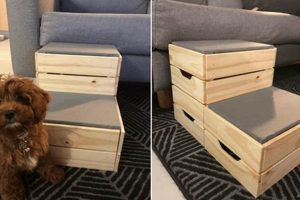
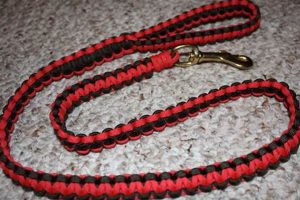
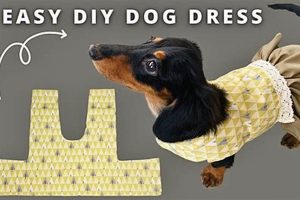
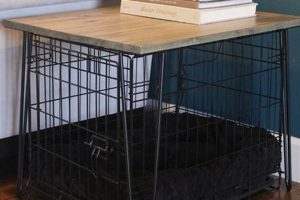
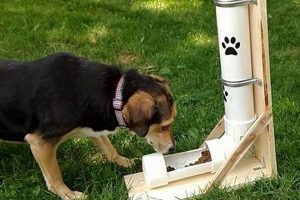
![Build a Safe Sliding Dog Gate DIY [Easy Steps!] The DIY Hub: Creative Crafts, Repairs & Life Hacks Build a Safe Sliding Dog Gate DIY [Easy Steps!] | The DIY Hub: Creative Crafts, Repairs & Life Hacks](https://craftingdiycenter.com/wp-content/uploads/2025/07/th-2861-300x200.jpg)